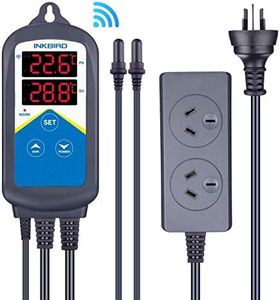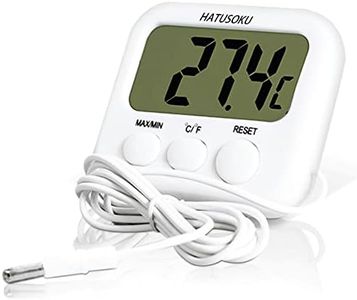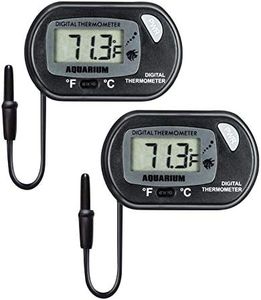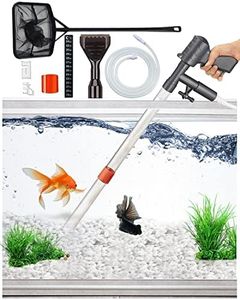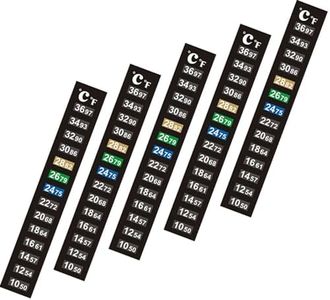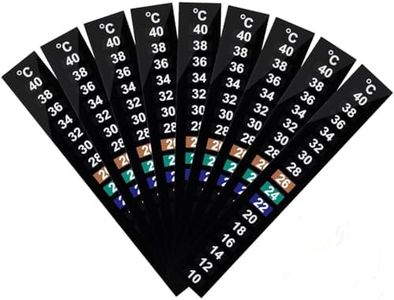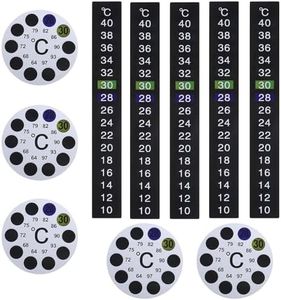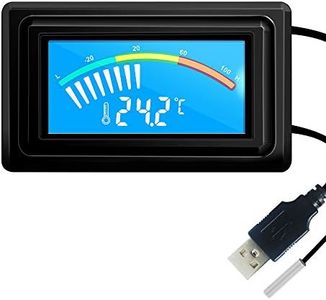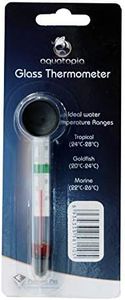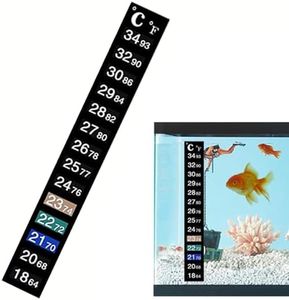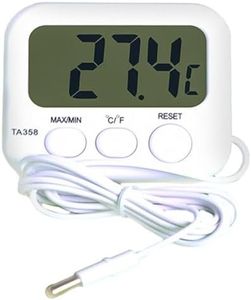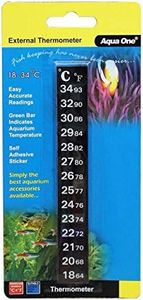We Use CookiesWe use cookies to enhance the security, performance,
functionality and for analytical and promotional activities. By continuing to browse this site you
are agreeing to our privacy policy
10 Best Aquarium Thermometers
From leading brands and best sellers available on the web.By clicking on a link to a third party's website, log data is shared with that third party.
Buying Guide for the Best Aquarium Thermometers
Choosing the right aquarium thermometer is important to ensure the health and comfort of your aquatic pets. Accurate temperature monitoring helps prevent stress, disease, and unsafe water conditions. The perfect thermometer for you will depend on the type of tank you have, your preferences for reading the temperature, and the level of precision you need. Understanding the key specifications will help you make an informed choice that suits your aquarium setup.Type (Stick-On, Floating, Digital, Probe)The 'type' of aquarium thermometer refers to how the device measures and displays temperature. Stick-on (or adhesive) thermometers attach to the outside glass, floating thermometers drift inside the tank, digital thermometers have electronic displays, and probe thermometers use a sensor placed in the water connected to a remote readout. Choosing the right type depends on how visible you want the display, how much precision you need, and whether you want to avoid extra devices in the tank. For casual monitoring, stick-on or floating types are simple and easy to use, while digital or probe thermometers are better for people who want quick readings, greater accuracy, or have large tanks.
AccuracyAccuracy refers to how closely the thermometer's reading matches the true water temperature. It's important because even small temperature changes can affect fish health. Accuracy is usually listed in degrees, such as ±1°F or ±0.5°C. Less accurate thermometers might be fine for hardy fish, but sensitive species or those requiring stable temperatures need highly accurate measurements. Consider your fish species and the importance of precision in your tank when deciding how accurate your thermometer should be.
Display ReadabilityDisplay readability is all about how easy it is to see and interpret the temperature reading. Thermometers can have small printed scales, colored markers, or digital displays. If your aquarium is placed in a dim room or you check it from a distance, a large, clear display is best. If you check the temperature up close and often, even a small display or color-change strip can work well. Choose based on your vision, the placement of your tank, and how often you plan to check the temperature.
Temperature RangeTemperature range indicates the minimum and maximum temperatures the thermometer can measure. This matters because you want a thermometer that fits the needs of your specific aquarium—whether it’s for tropical or cold-water species. Ranges usually span from the low 50s°F (10°C) up to about 100°F (38°C). Make sure the thermometer can measure just below and above your tank’s ideal temperature, so you’re alerted to any dangerous fluctuations.
Attachment MethodAttachment method refers to how the thermometer stays in place—whether it's sticking to the outside, using suction cups, floating, or being clipped to the rim. The right method depends on the layout of your tank and your access to it. Floating thermometers are simple but may move around, while suction or clipped thermometers stay put for more consistent readings. If you want a neat look or worry about disturbing the water, stick-on types are low profile. Think about what will be most convenient and least disruptive for your aquarium routine.
Water Resistance and DurabilitySome thermometers are fully submerged, while others stay dry on the outside. It's important for any device in or near water to be durable and resist corrosion or leaks. This spec matters more if your thermometer will be in the tank water, exposed to splashes, or handled often. If you plan to move the thermometer or use it in different tanks, look for a model labeled as waterproof and built from long-lasting materials. This will ensure your thermometer keeps performing over time without needing replacements.
